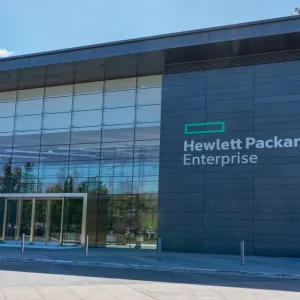
Microsoft says its Windows Virtual Desktop (WVD) service is now generally available in all regions. The offering lets IT run Windows 10 (and 7) and their applications as services on Azure; spinning up users’ desktops on virtual machines and delivering them from the cloud, rather than using on-premises desktop software.
Demand will live or die by resilience (glitches in the cloud taking an application offline is painful; the same thing taking an entire enterprises’ desktops down is unthinkable), and pricing: Microsoft’s pricing calculator, like those of most cloud providers, is something that – to the uninitiated – can only be seen through a glass, darkly.

What is Microsoft Windows Virtual Desktop?
WVD is not a all-inclusive Windows desktop package.
Rather, it is a set of Azure building blocks. So, what does it cost? Microsoft Windows Virtual Desktop “is available to you at no additional cost if you have an eligible M365 license. Just pay for the Azure resources required” as Microsoft coyly puts it.
SIs/IT will need to assess these costs across three planes, as Microsoft partner Nerdio’s CEO Vadim Vladimirskiy explains – saying they need to check:
1. “Azure infrastructure to run the desktops and apps (i.e. WVD session hosts)
2. “WVD Management Services (i.e. Control Plane)
3. “Software licensing (i.e. Windows 10 Enterprise)”.
Enterprises assessing the options may want to get their calculators out or work with an SI on an estimate…
The company sees particular appetite for the service for enterprises needing elasticity in spinning up desktops for short-term or temporary employees, as well as in the wake of M&A activity. It also touts the ability to use the cloud’s computing heft to spin up instances that can handle specialist workloads or provide high levels of security.
As a sweetener, Microsoft is offering free extended security updates until January 2023 for users of Windows 7 virtual desktops, say this offers “more options to support legacy apps while you transition to Windows 10.”
(The Microsoft Windows virtual desktop client is available on Windows, Android, Mac and iOS.)
Vladimirsky notes: “The cost of this Azure infrastructure is largely the same if you were using RDS to deliver Windows desktops using ‘desktop experience’ rather than the native Windows 10 look and feel that you get with WVD.
“From a resource utilization and cost perspective, this component of WVD is very much similar to the cost of Azure infrastructure to run RDS session hosts, rather than WVD session hosts.”
The company, meanwhile, says users can reduce costs with pooled, multi-session resources that allow admins to “greatly reduce the number of virtual machines and operating system (OS) overhead while still providing the same resources to your users”.
General availability comes five months after a public preview, and a year after the offering was first announced. While companies like VMware already offer virtual desktops, Microsoft says it is the “only service that delivers simplified management, a multi-session Windows 10 experience, optimizations for Office 365 ProPlus, and support for Windows Server Remote Desktop Services (RDS) desktops and apps.”
Brad Anderson, VP for Microsoft 365, and Takeshi Numoto, VP for Azure said: “To help increase productivity, we invested heavily in the Office experience in a virtualized environment with native improvements, as well as through the acquisition of FSLogix. In July, we made the FSLogix technology available to Microsoft 365, Windows 10 Enterprise, and RDS customers. Today, all FSLogix tools are fully integrated into Windows Virtual Desktop, enabling you to have the smoothest, most performant Office virtualization experience available today.
Admins can use the Windows Virtual Desktop PowerShell and REST interfaces to configure host pools, create app groups, assign users, and publish resources.
This includes the ability to publish full desktop or individual remote apps from a single host pool, create individual app groups for different sets of users or assign users to multiple app groups to reduce the number of images. For businesses running Windows, this may be the start of one of the biggest shake-ups in recent years.
Microsoft Windows Virtual Desktop partners include Citrix, VMware, CloudJumper, ControlUp, Lakeside Software, Liquidware, Nerdio, ThinPrint and WorkSpot.






